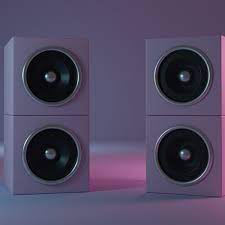The art of speaker design, explained by a master

The world of audio is filled with an endless array of options for creating immersive sound experiences, but arguably none as important as the speakers themselves. The design and construction of speakers is an artistry appreciated by audiophiles and casual listeners alike. When crafted with precision and passion, they bring life to the sounds we cherish. To better understand this intricate process, let’s delve into the art of speaker design as explained by a master in the field.
Beginning with the Basics
At its core, a speaker is a device that converts an electrical signal into sound through vibrations within a set frequency range. This conversion occurs when an alternating current (AC) flows through a coil attached to a diaphragm within the speaker’s structure, typically referred to as the ‘cone.’ As the AC signal varies, so does the strength of the magnetic field interacting with the coil. This pushes and pulls the cone back and forth, generating sound waves that reach our ears.
The Artistry in Design
Designing these intricate devices can be both a science and an art. Varying materials and components contribute to nuanced changes in sound quality, resonance, and performance. Depending on the application – whether for studio monitors or home theater setups – speaker designers must consider factors such as spatial awareness, user preferences, and environmental factors.
Materials Matter: From woofer cones made of paper pulp or Kevlar to tweeters crafted from silk or titanium, each material offers unique characteristics that impact the produced sound. For example, rigid materials like Kevlar ensure greater accuracy in reproducing low frequencies due to minimized distortion.
Crossover Magic: In multi-driver designs, engineers pay close attention to crossover points – where signals are divided between woofers (low frequency), midrange drivers (mid frequency), and tweeters (high frequency). Properly determining these points ensures seamless blending in terms of audio output, accuracy, and tonality.
Cabinet Construction: The design of a speaker’s enclosure plays a critical role in shaping the overall audio experience. Numerous considerations, such as porting, bracing, and damping, can optimize performance by reducing unwanted resonances and reflections.
The Evolution of Speaker Aesthetics
In addition to sound quality and performance, speaker design has evolved to become an element of interior décor. With advances in modern materials and manufacturing processes, designers have been able to diverge from traditional boxes and incorporate more visually striking forms.
This evolution has led to a myriad of creative approaches, from sculptural and organic shapes to minimalist geometry. Today’s speakers not only please the ears but also the eyes of their users through seamless integration into a wide variety of architectural environments.
In Conclusion
The meticulously crafted art of speaker design requires a balance between technical know-how and artistic vision. Master designers consistently challenge conventions, pushing for new heights in audio performance while remaining true to their creative instincts. We can all appreciate the results – immersive sound experiences that truly transport us into different worlds.





